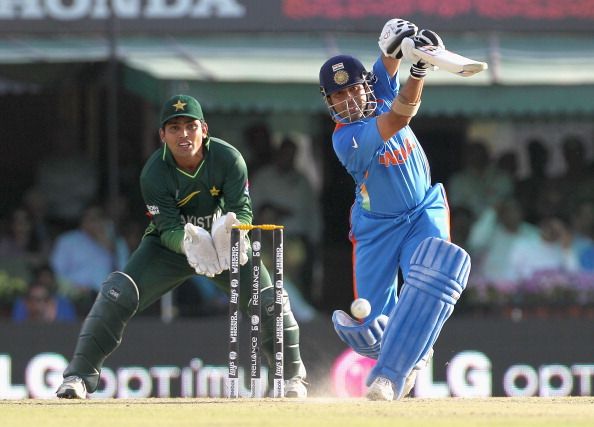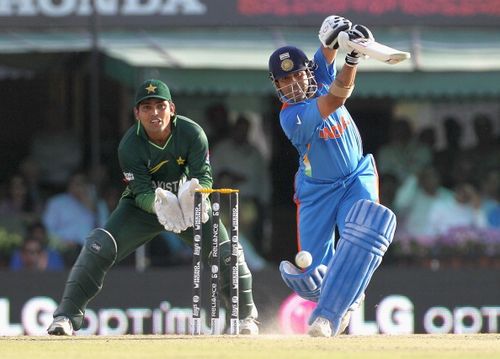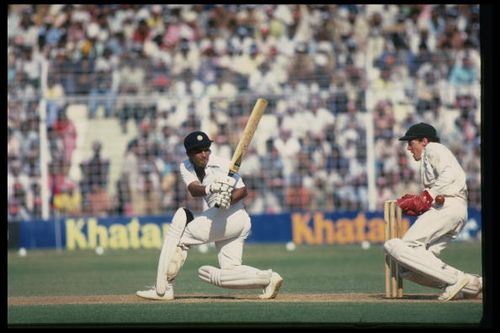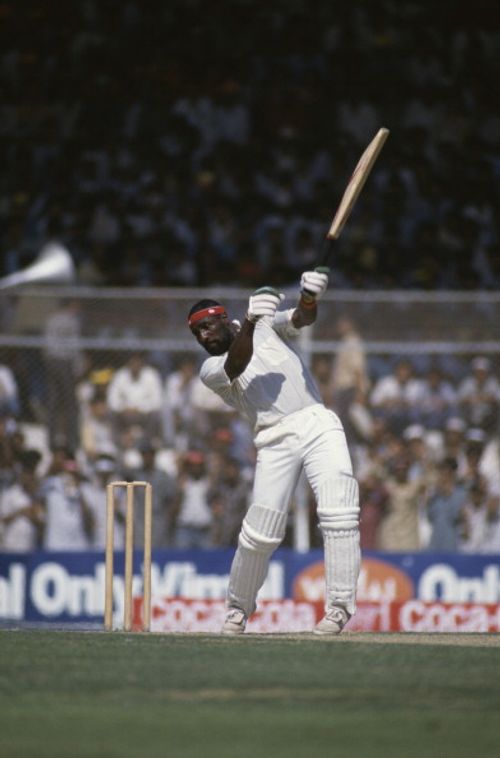
The most enticing breed of batsmen

The exquisite sight of the batsmen making their way to the middle amid the rapturous applause, the picture of a batsman taking his guard at the crease, the statuesque stands, the bewitching back lift, the fleet of foot, swift of hands and the seductive sound of the ball meeting the sweet spot of the bat, the red kookaburra ball galloping through the plush green grass- will all kindle the G-spot of the connoisseurs of the game and more so for the batting fans, who form the major chunk of the game’s ardent followers.
However discerning it may be, one needs to come to terms with the fact that the onus is now on the batters and the pendulum has swayed towards them, the balance has given in towards them; despise it, feud over it, quarrel or quibble over with it, it takes an herculean effort to change it(welcome Anil Kumble at the ICC technical committee). The fans have always rooted for the batsmen. Sunil Gavaskar once came up with a comeback for the above ‘allegation’ saying that pacers are the ones who get beautiful girlfriends. The line might be as cheesy as it sounds, but the fact remains to exist, remains to haunt that the onus is always on the batsmen.

So, from the wide genre of batsmen, there is this one breed of batsmen that has never ceased to enthral and entice the viewers. Test cricket batting is an pottery art and each craftsmen has his unique handwork, and his signature all over it. Being an Indian, I would like to pigeon-hole one variety of it as the Gavaskar school of batting. Getting into the zone, employing an impeccable defense, irreproachable footwork, and immaculate strokes that would give the bowlers a run for their money. Patience is virtue in test cricket and for these class of batsmen, patience is the stock attribute, present in abundance in their arsenal. They take their time to get into the groove, get their heads in, and what follows is an engulfing battle between the ball and the bat. This breed of batsmen drop the anchor, meticulously negotiate each delivery, ducking the bouncers, putting the right foot forward to read the spin, blocking the ones aimed at the wicket, thus employing a barricade, leaving alone the one that goes away, thus narrowing down the uncertainty corridor and leaving the bowler with minimal options. Here the bowler is grilled until he decides to give up and that is when the loose deliveries surface, hence putting them away by replicating a stroke straight from the textbook that forces the fielding captain to bring in a change of arms. Hence, these are the batsmen who bat throughout the day and take their time in working the scoreboard, yet holding one end and slowly taking the game away from the opposition. In the modern game, Jacques Kallis has been the perfect ambassador for this breed of batsmen. Rahul Dravid was once a working model of this kind of batsmanship, churning out some brilliant knocks at Adelaide, West Indies, etc.

While most of the purists and the test cricket lovers of the previous generations, unswayed by the extravaganza of the T20 format would book in for bed and breakfast for witnessing the above mentioned contest, there would be certainly be another class of fans like me, who would root for another domain of batting style, the pulsating one, the swashbuckling one, the scintillating one, and yet the most delightful and resplendent one that has flashes of divinity all over it.
This form of batsmanship deals with the bowlers in a totally different dimension. In this form of batting, the attack is dismantled, the balls are annihilated, the loose balls ravaged, the better ones desolated and the good ones extirpated, the bowler thus mutilated and marauded. The self esteem of the bowler is thumped or stamped and thus vapours of disappointment and defeat emerge, leading to a scarcity of plans and options and in turn conceding that session of play to the batting team. A test innings might not fit the frame of the above statements and might easily misconstrued to be exaggeration, but it will strike the right chords with the close followers of the game. In this style of batting, each delivery continues to be meticulously negotiated in a ruthless and brutal style; pulling and cutting the shorter ones, staying behind and chopping the turners, putting the right foot forward and audaciously driving the over-pitched ones in the corridor of uncertainty and hence routing the attack. These kind of batsmen get into the middle, take a malevolent stand and punish every delivery that comes by. The scoreboard is kept ticking and the just before the attack can be annulled, enough damage would have been done and the course of the game would have been turned by its head. The psychology of the bowler is the worst affected in this case, in turn spoiling the line and length and last but not least, nullifies the confidence that would bite him throughout the tenure of the series.
 Another obvious misconception of this style is the misinterpretation of it to be the Gilly or Viru style of batting. I am talking about the Vivian school of batting. Aggressive batting doesn’t necessarily translate to hitting over the field or slogging. It is the voracious cover drives, the scintillating straight drives, the wristy flicks, the thunderous pulls, the callous cuts, the cheeky paddle sweeps, everything ritualistically drawn out of the text book and surgically executed. This form of batting is best advocated by Sachin Ramesh Tendulkar, once a prodigy, then a genius and now, a divine batsman. Viv Richards, Brian Lara and the Ricky Ponting too fall under this category, each one, a tombstone of batting.
Another obvious misconception of this style is the misinterpretation of it to be the Gilly or Viru style of batting. I am talking about the Vivian school of batting. Aggressive batting doesn’t necessarily translate to hitting over the field or slogging. It is the voracious cover drives, the scintillating straight drives, the wristy flicks, the thunderous pulls, the callous cuts, the cheeky paddle sweeps, everything ritualistically drawn out of the text book and surgically executed. This form of batting is best advocated by Sachin Ramesh Tendulkar, once a prodigy, then a genius and now, a divine batsman. Viv Richards, Brian Lara and the Ricky Ponting too fall under this category, each one, a tombstone of batting.
To serve the title, I would vouch for the layyer form of batting to be the most enticing one. It takes heights of concentration and a hawk-eye to drive the one that goes away, closely follow the one that comes in and to pull it over mid-wicket and to open the face of the bat to drive it behind the bowlers back. It takes enormous skills and batsmen enriched with such attributes are the ones who employ this technique. The misconception of this technique to be below par compared to the former one isn’t called for. Write off this technique at your own peril.
One such innings is the one at Chennai, Sachin Tendulkar took it against the legendary wizard Shane Warne, unleashing a wide spectrum of strokes stacked up in his breathtaking armory. It was the perfect exhibition of onslaught in a test match and remains to be treasured as one of the most pulsating contests between the ball and the bat. Former umpire David Shepherd hailed it as the best ever battle he’s stood witness to.
Hence, to sum it up, my personal favorite is the technique that combines aggression as it not only dents the bowler, it dents the entire opposition for the entire tournament. The recovery from such blitzkrieg is what spells the severity of the attack. Aggression comes in different capsules. Aggression lies in the heart, they say, yet the most enthralling and enticing form of batting is the Vivian school of batsmanship.